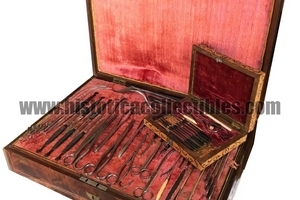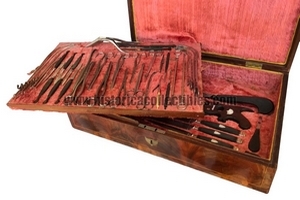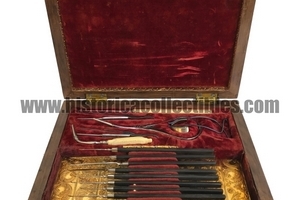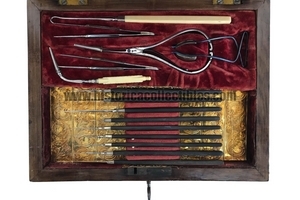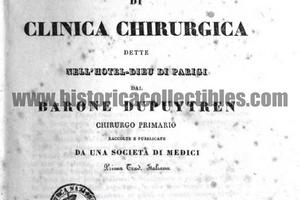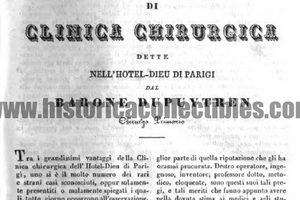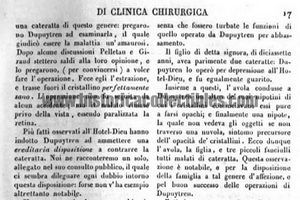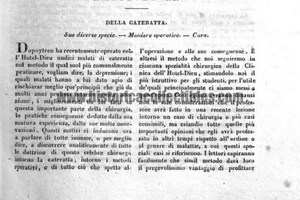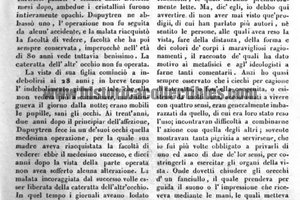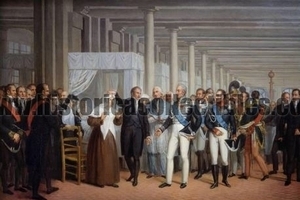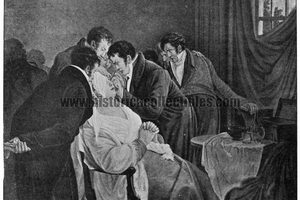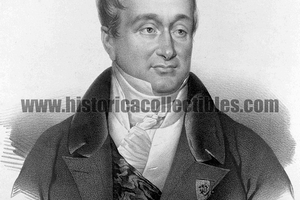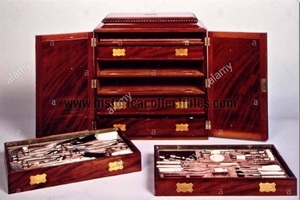Surgical Cassettes by Guillaume Dupuytren Baron, Napoleon Bonaparte's Doctor, Late 18th century
Surgical boxes, made of wood, belonging to the Baron, Dr. Guillaume Dupuytren, 1777- 1835, considered the greatest French surgeon of the 19th century and one of the greatest ever: Chief Surgeon of the Hôtel-Dieu in Paris since 1815, he is famous for having cured Napoleon Bonaparte's hemorrhoids and for having described the deforming Dupuytren's disease.
These two extraordinary surgical boxes, made of wood and walnut briar with inlays, the larger one, and the smaller one made of mahogany wood inlaid with fruit tree essence, are made up of instruments belonging to Dupuytren's two specializations: Pathological Surgery and Surgery Ophthalmology. Thanks also to the small box of ophthalmic surgical instruments, it was possible to delve deeper into one of the specializations in which Dupuytren excelled.
In reality, until today, there were no known surgical cassettes belonging to him relating to eye surgery. In fact, the only two known to him that belonged to him and are exhibited in the Louvre Museum refer exclusively to anatomical surgery.
Thanks to a scientific publication, printed in Italian by the Sansone Coen typography of Florence in 1834, "Vocal Lessons of Clinical Surgery" given in the Hotel-Dieu in Paris where Baron Dupuytren was the primary surgeon, we can learn that the famous surgeon explained between the other a complete treatise of all the studies and the vast surgical practice of "cataracts" which he personally operated several times on elderly patients but also on very young patients.
It was also customary at the time for surgical instrument manufacturing companies to pay homage to important surgeons and doctors with their most valuable products in elegant cosmetic bags in order to increase their prestige and thus be able to win the right to advertise their brand. as direct suppliers of important luminaries. All this confirms the clearest and most explicit explanation of the presence of the name Guillaume Dupuytren, Baron, on both cases of surgical instruments.
Furthermore, I want to point out that there are 2 other surgical cassettes that belonged to him and are preserved in the Louvre Museum in Paris (see last 2 photos), which stand out for the extraordinary quality and quantity of instruments preserved inside them but also do not present aesthetically inlay work as well as the cassettes published on this site.
In all likelihood, it is believed that the 2 cassettes preserved in the Louvre were donated to him but not used as they are in "like new" condition. The instruments and cassettes published on this site are probably different and were used frequently by Dupuytren.
Guillaume Dupuytren, Baron, (born October 5, 1777, Pierre-Buffière, near Limoges, French surgeon and pathologist known for his description and development of surgical procedures to relieve "Dupuytren's contracture" (1832), in which deep tissue fibrosis of the palm causes the permanent retraction of one or more fingers.
In 1802 Dupuytren joined the staff of the Hôtel Dieu, which he attended for more than 30 years, becoming its surgeon-in-chief. He was surgeon to Louis XVIII, who made him baron, and to Charles X.
Dupuytren was the first to remove the lower jaw (1812). He introduced a new classification of burns and provided the first clear description of the pathology of congenital hip dislocation (1826). He devised surgery for cervical cancer and the creation of an artificial anus (1828). Among his other triumphs were subclavian artery ligations (1812 and 1829), treatment of aneurysms by compression (1818), and surgical treatment of the crooked neck (1822).
He was also famous for having cured Napoleon Bonaparte's hemorrhoids.

